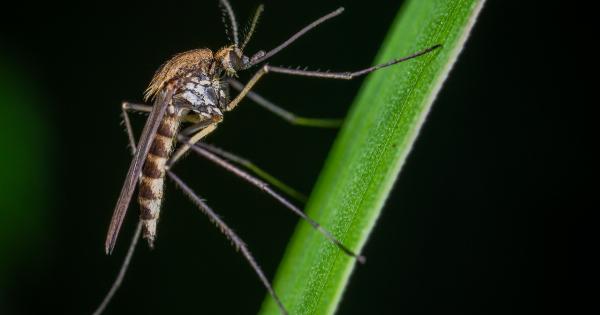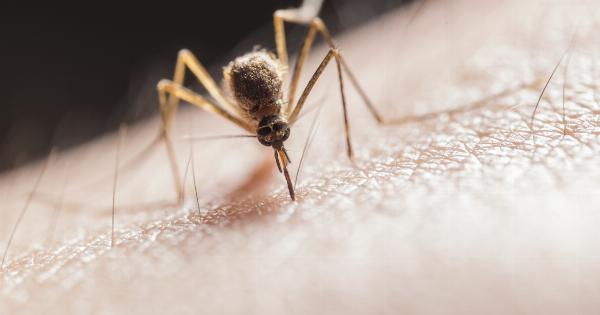Mosquitoes, those tiny buzzing insects that seem to appear out of nowhere, are much more than just annoying pests. They can pose serious health risks to humans and animals alike.
Mosquito-borne diseases have been a significant cause of illness and death throughout history, and understanding the connection between mosquitoes and health is crucial for preventing and combating these diseases.
The Mosquito Life Cycle
To fully grasp the impact mosquitoes can have on our health, it is essential to understand their life cycle. Mosquitoes undergo a complete metamorphosis, progressing through four distinct stages – egg, larva, pupa, and adult.
The eggs are typically laid on the surface of stagnant water, which acts as their breeding ground.
Once the eggs hatch, they develop into larvae, commonly known as wrigglers. These larvae live in water and feed on organic matter and microorganisms present in their environment. Over time, they molt several times, growing larger with each stage.
Following their final molt, the larvae enter the pupal stage. The pupae, also known as tumblers, do not feed but instead focus on their development. Inside the pupal case, the mosquito undergoes a transformation, preparing to emerge as an adult.
Eventually, the fully developed adult mosquito breaks free from the pupal case and takes to the air. Female mosquitoes require a blood meal to complete their reproductive cycle, while male mosquitoes primarily feed on nectar and other plant fluids.
It is during the blood-feeding process that they can transmit diseases to humans and animals.
The Health Risks Associated with Mosquitoes
Mosquitoes are known vectors of numerous diseases, making them one of the deadliest creatures on the planet. Some of the most common mosquito-borne diseases include:.
1. Malaria
Malaria is caused by the Plasmodium parasite and is transmitted through the bite of infected female Anopheles mosquitoes. This disease affects millions of people worldwide, particularly in tropical and subtropical regions.
2. Dengue Fever
Dengue fever is caused by the dengue virus, which is transmitted by the Aedes mosquito. Symptoms of dengue fever can range from mild to severe, with severe cases potentially leading to dengue hemorrhagic fever or dengue shock syndrome.
3. Zika Virus
Zika virus garnered significant attention in recent years due to its potential to cause birth defects, particularly microcephaly. It is primarily transmitted through the bite of infected Aedes mosquitoes.
4. West Nile Virus
West Nile virus produces flu-like symptoms and can lead to severe neurological diseases such as encephalitis or meningitis. It is primarily transmitted to humans through the bite of infected Culex mosquitoes.
5. Chikungunya
Chikungunya virus causes high fever and severe joint pain, often leading to long-term joint inflammation. It is transmitted through the bite of infected Aedes mosquitoes.
Mosquito Control Measures
Given the significant health risks associated with mosquito-borne diseases, various control measures have been implemented to reduce mosquito populations and the transmission of diseases. These measures include:.
1. Source Reduction
Source reduction involves eliminating or modifying mosquito breeding sites. By eliminating standing water or properly maintaining water sources like pools and ponds, the number of mosquitoes can be significantly reduced.
2. Insecticides
Insecticides can be used to control mosquito populations. These can be applied to breeding sites or adult resting areas to kill mosquitoes and disrupt their life cycle.
However, caution must be exercised to avoid adverse effects on other organisms and the environment.
3. Biological Control
Biological control methods involve introducing natural predators, such as certain fish or bacteria, to target and reduce mosquito populations. For example, the introduction of larvivorous fish in water bodies can effectively control mosquito larvae.
4. Personal Protection
Personal protection measures, such as wearing long sleeves and pants, using mosquito repellents, and sleeping under bed nets, can significantly reduce the risk of mosquito bites and the transmission of diseases.
The Future of Mosquito Control
With the increasing global threat posed by mosquito-borne diseases, research efforts are focused on developing innovative control measures. These include:.
1. Genetic Modification
Scientists are exploring genetic modification techniques to create mosquitoes that are unable to transmit diseases. By altering the mosquito’s DNA, researchers aim to reduce their ability to spread pathogens to humans and animals.
2. Wolbachia Bacteria
Another approach being investigated is the use of Wolbachia bacteria. This naturally occurring bacterium can be introduced into mosquito populations. Wolbachia-infected mosquitoes have a reduced ability to transmit diseases like dengue fever.
3. Vaccines
Efforts are underway to develop vaccines against mosquito-borne diseases. Vaccination not only protects individuals but also contributes to reducing the overall prevalence of these diseases in communities.
Conclusion
The connection between mosquitoes and health cannot be overlooked. Mosquito-borne diseases continue to pose significant challenges to global public health.
Understanding the mosquito life cycle, the diseases they transmit, and implementing effective control measures are essential in preventing the transmission and reducing the impact of these diseases on human and animal populations.































